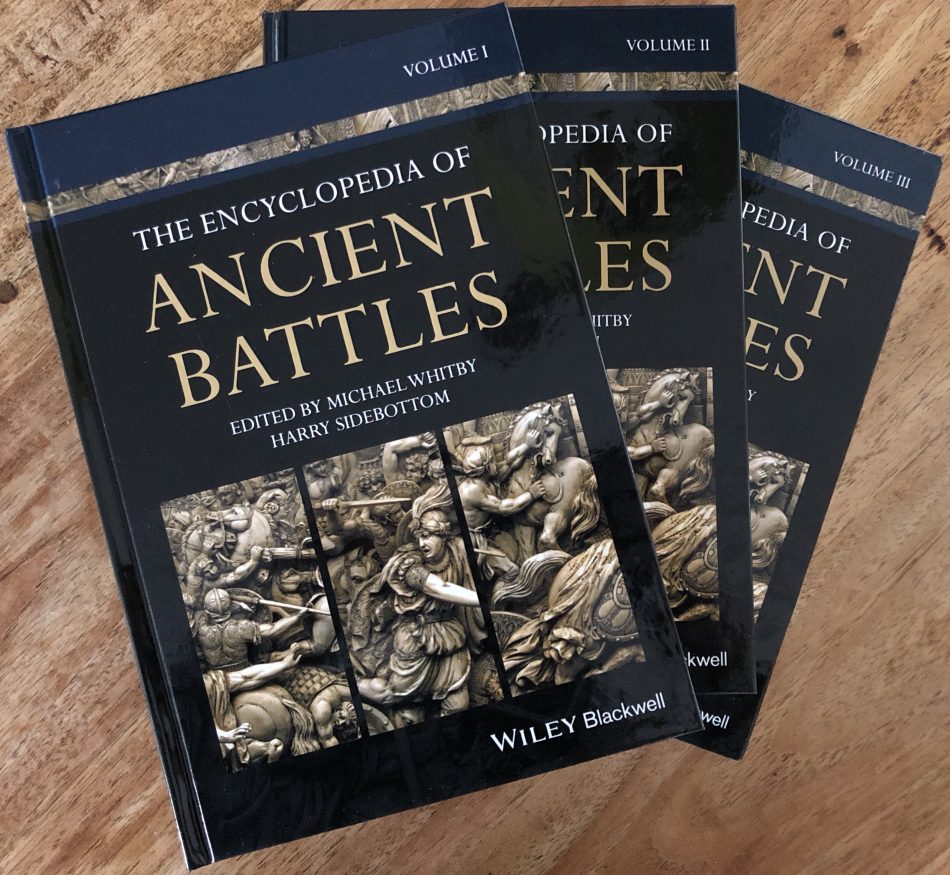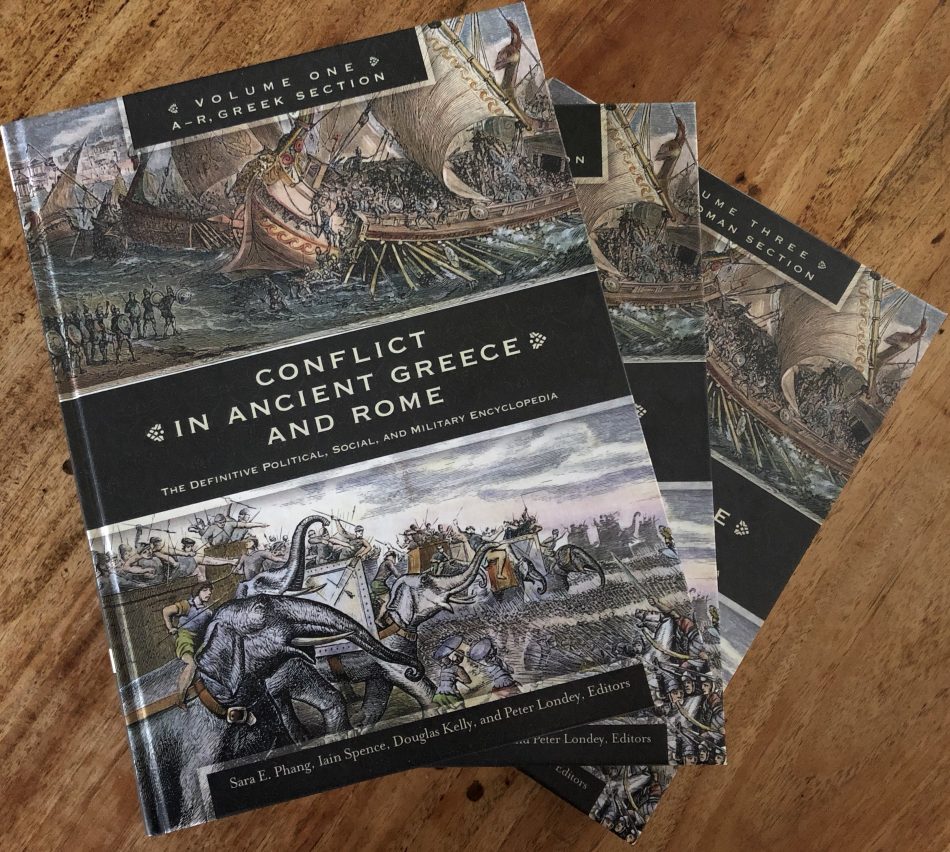Weighty encyclopedias
I really made out like a bandit at my birthday in November and Christmas just gone by. Generous donors gave me two very weighty (I did worry about my luggage capacity for the flight back) and expensive encyclopedias dedicated to our favourite topic. I got The Encyclopedia of Ancient Battles (EAB) (edited by Harry Sidebottom and Michael Whitby) as well as Conflict in Ancient Greece and Rome - the definitive political, social, and military encyclopedia (CAGR) (edited by Sara Phang, Iain Spence, Douglas Kelly, and Peter Londey).
They are both 3-volume sets and retail for breathtaking prices. Amazon offers them for $492.80 and $258.58. Shopping around, or 'making do' with a second-hand copy is surely worthwhile. Digital versions also exist though the ordering process seems a bit murky. Wiley-Blackwell does offer a few sample chapters from EAB.
You'll have to forgive me for not having read a total of 2831 pages (okay, that's with indexes) yet to give you a full review. But I thought it might be interesting to do a quick comparison. After all, you're unlikely to run into both (or even one of these) at a local bookstore for a perusal if you were in the market for such tomes of reference.
Characteristics
As it happens, that total number of pages above breaks down almost exactly 50:50. EAB's three volumes add up to 1410 pages. Each volume is a 24*17cm hardback with a glossy, laminated cover. CAGR is, evidently, just a tiny bit longer, and the hardback volumes are larger too, at 29*22cm (a centimeter shorter and wider than your copy of Ancient Warfare). The covers of both sets are in full colour. CAGR uses colourised early-modern engravings and EAB features what looks like a renaissance sculpture of Alexander and Darius in battle. Was there really nothing ancient? Inside, both sets are stylishly black and white.
Illustrations on the inside are very limited, but there is a marked difference when it comes to maps. As you will see below, that makes some sense due to the different set-up, but still. CAGR has seven maps at the end of the Greek section (in the middle of Volume II) and five for the Roman section, a very limited number for such a large subject. In contrast, EAB offers dozens of campaign and battle maps - the list alone covers 3.5 pages.
Apart from the 'meat' of these encyclopedias, which I'll get into below, the ancillaries differ quite a bit. EAB offers a good overview of sources, each supplied with a very brief summary, an introduction by editor Harry Sidebottom, and an index of nearly 100 pages. CAGR is very clearly split in a Greek and Roman section, and each comes with a general introduction, notes on dating, spelling, abbreviations, an extensive chronology, a "Guide to related topics" (e.g. all entries related to politics, or to Sparta), "Quotable quotes" (pithy sayings to impress!), a 20-30 page selection of important paragraphs from primary sources, a glossary, and a general bibliography. The entire set also comes with a 40-page index at the very end.
The core
It may already be obvious that these books are quite different in setup. EAB does exactly what it says on the tin. After four general topics in Part I (on naval warfare, siege warfare, war and battle in the Greek and Roman worlds respectively), it goes into 'chronological mode' starting with the Lelantine War all the way (via Hellenistic and Roman republican wars in Vol II) to the Roman imperial era in Volume III to end with the Islamic Conquests of the seventh century. This is divided into ten parts (II-XI), with a varying number of articles in each. Every war gets a short introduction, followed by paragraphs on the campaigns and battles. Footnotes are kept to a minimum, only referring to sources, but every article has a list of directly relevant references, as well as a few titles for further reading.
The CAGR, as I said, is split into two separate sections with even separate editorial teams. Phang takes care of the Roman section, while the three others handle the Greeks. The split is, awkwardly, right in the middle of volume II. Within those two sections, it's a strictly alphabetic encyclopedia with a total of roughly 1350 entries on both the history of warfare and battles, as well as related topics such as units, generals, weapons, politics, religion, etc. Basically, any subject you might see articles on in Ancient Warfare might turn up here as well. Apart from the overall bibliography, each entry comes with a short section of further reading as well as suggestions for other entries you might want to check out.
Choices, choices
The obvious first remark for any kind of conclusion would be: why are these not available online as cross linked, hypertexted encyclopedias? Because they're on my bookshelf, hah! (sorry, couldn't help gloating)
Do I prefer one over the other? I'm not sure. In both cases, the entries have been written by specialists, and with the further reading, they provide excellent primers on the topics within. CAGR's net is cast much wider, while those with a more strict military strategic and tactical interest may find themselves better served by the EAB. They are probably quite complementary, but I don't think you wanted me to tell you to get both...



